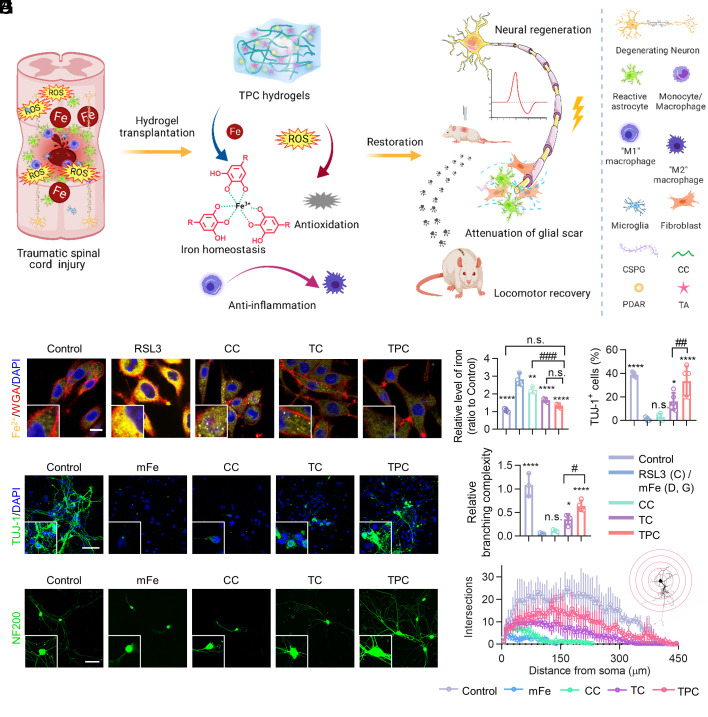Fig. 1.
Polyphenol-based hydrogels for the treatment of SCI. (A) Schematic illustration of TPC hydrogels for SCI repair. The hydrogels implanted on the SCI sites can chelate overloaded iron ions, scavenge ROS, and suppress inflammation, resulting in neural regeneration, attenuation of glial scar, and locomotor recovery in rats. (B) Representative fluorescence images of RSL3-treated PC12 cells incubated with different materials. Fe2+, membranes, and nuclei were strained with FerroOrange (yellow), Alexa Fluor 633-wheat germ agglutinin (WGA-AF633, red), and DAPI (blue), respectively. (Scale bar: 10 μm.) (C) Quantification of Fe in PC12 cells, which were normalized against the control (PBS) group (n = 4). (D) Quantification of the percentages of TUJ-1+ cells derived from NSPCs (n = 5). (E) Representative fluorescence images of NSPC-derived cells treated with Fe2+ and CC, TC, or TPC at day 7, and stained with anti-TUJ-1 antibodies (green) and DAPI (blue), respectively. (Scale bar: 50 μm.) (F) Representative fluorescence images of cultured DRG neurons, stained with anti-NF200 antibodies (green). (Scale bar: 50 μm.) (G and H) Branching complexity (G) and Sholl analysis (H) of neurite outgrowth in DRGs incubated with different materials, which were normalized against the control group (n = 3). All data represent the mean ± SD. (C, D, and G) One-way ANOVA followed by Tukey’s post hoc test. *P < 0.05, **P < 0.01, ***P < 0.001, and ****P < 0.0001 compared with the RSL3 or mFe2+ groups. #P < 0.05, ##P < 0.01 and ###P < 0.001 compared with the TPC group. n.s. = not significant.

